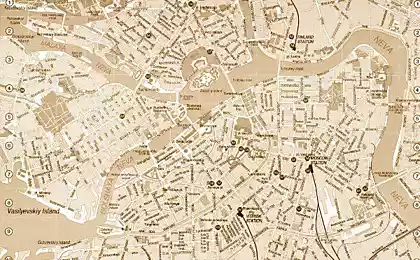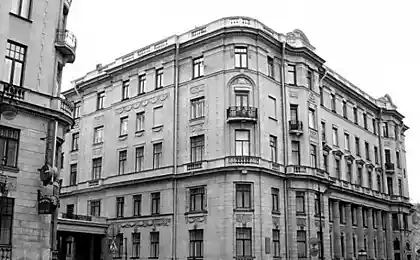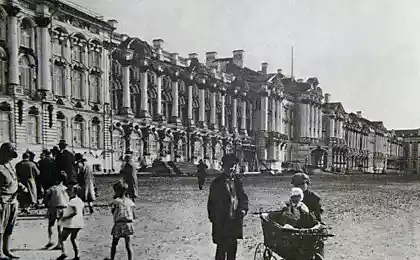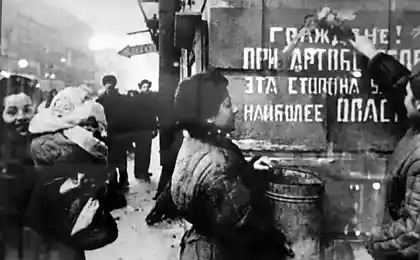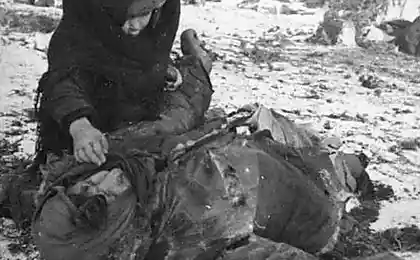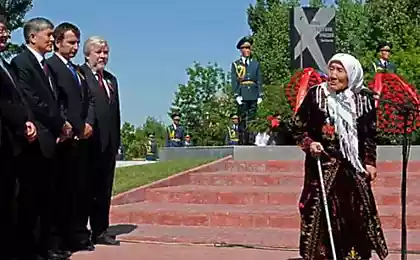1797
Cats siege of Leningrad
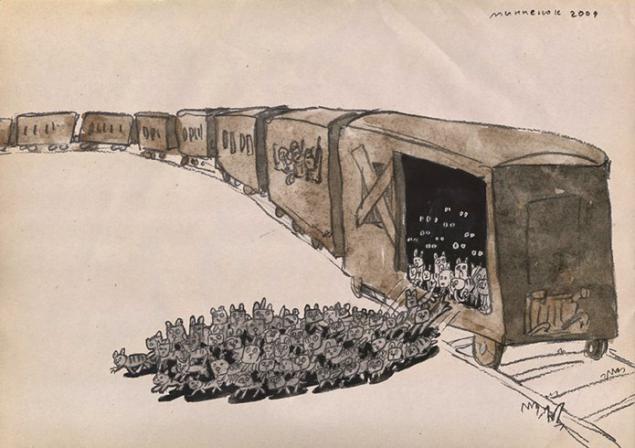
1942 turned out to Leningrad doubly tragic. To hunger, claiming hundreds of lives every day by adding more and a plague of rats. Eyewitnesses recall that rodents around the city in huge colonies. When they were crossing the road, even the trams had to stop.
Blokadnitsa Cyrus Loginov recalled that "... the darkness a long line of rats led by their leaders of moving on Shlisselburgsky path (now Avenue Obukhov defense) directly to the mill, where the milled flour for the whole city. In rat shot, they tried to put pressure tanks, but nothing worked: they climbed on tanks and safely drove them further. It was the enemy of organized, intelligent and brutal ... »
All kinds of weapons, bombing and fire fires were powerless to destroy the "fifth column", overeat die of hunger blockade. Gray creature eats even what little food that remained in the city. In addition, because of the hordes of rats in the city there was a threat of epidemics. But no "human" rodent control methods did not help. And cats - the main enemies of the rat - the city was not long ago. They ate.
A little sad, but honestly
Initially surrounding condemned "koshkoedov».
"I eat on the second category, so I have the right" - justified the fall of 1941 one of them.
Then the excuses were no longer required: lunch from cat was often the only possibility to save a life.
"December 3, 1941. Today ate fried cat. Delicious "- wrote in his diary of 10-year-old boy.
"The neighbor's cat, we ate the entire communal apartment in the beginning of the blockade," - says Zoe Kornileva.
"In our family got to the point that his uncle demanded to be eaten by a cat Maxim almost every day. My mom, when they went out of the house, locked the Maxima on the key in a small room. We still lived parrot Jacques. In good times Zhakonya our singing, talking. And then starve the entire oblez and Prov. A little sunflower seeds, which we barter for Dad's gun, soon ran out, and Jacques ours was doomed. Ivory Maxim also barely hung - wool tufts get out, claws not cleaned even stopped meowing, begging for food. Once Max had managed to get into the cage to Zhakone. At other times, the drama would happen. And that's what we saw when he returned home! Bird and cat sleeping in a cold room, huddled together. Uncle is so affected that he stopped at the cat attempt ... »
"We had a cat Vaska. A favorite of the family. In winter, the 41st mother took him somewhere. Said that in the shelter, they say, it will be there to feed the fish, something we can not ... In the evening my mother cooked something like cutlets. Then I wondered where we meat? Did not understand anything ... Only then ... It turns out that thanks to Vaska we survived the winter ... »
"In the house at the time of the bombing took off glass, furniture long foot. Mom slept on the windowsill - the good they were as wide as the shop - the umbrella sheltering from the rain and wind. Once someone has to learn that my mother pregnant with me, she gave herring - she wanted salty ... home mom to put a gift in a nook, hoping to eat after work. But he returned in the evening, found the tail of herring and grease on the floor - the rats feast. It was a tragedy that will recognize only those who survived the blockade "- says an employee of the church of st. Seraphim of Sarov Valentina Osipova.
Cat - means victory
Nevertheless, some citizens, despite the severe famine, regretted their favorites. Spring of 1942, half dead from starvation old woman made her cat out for a walk. People approach it, grateful that she kept it.
One former blokadnitsa recalled that in March 1942, when she saw on a city street skinny cat. Around her stood a few old women and were baptized, and emaciated, like the skeleton of a policeman saw to it that no one caught a small animal.
12-year-old girl in April 1942, passed by the cinema "Barricade", saw a crowd of people at the window of a house. They marveled at the extraordinary spectacle of the sun on a bright windowsill lying tabby cat with three kittens. "Seeing her, I realized that we survived," - says the woman many years later.
Shaggy commandos
Once was to break the blockade, issued a decree signed by the chairman of the Leningrad City Council about the need to "write out of the Yaroslavl region and deliver to Leningrad smoky cat." Yaroslavl could not perform a strategic order and we caught the right amount of smoky cat was then considered the best rat-catchers.
Four car cats arrived in the dilapidated city. Part of the cats was released immediately at the station part was distributed to residents. Snapped up instantly, and many do not have enough.
L. Panteleev recorded in the besieged diary in January 1944: "Kitten in Leningrad costs 500 rubles." Kilogram of bread then sold to the hands for 50 rubles. Salary watchman was 120 rubles.
- For the cat gave the most precious thing we had - bread. I myself left little of their rations, then to give this bread for a kitten woman whose lambing cat - recalls Zoe Kornileva.
Arriving in a dilapidated town cats with heavy losses on their part have managed to drive away the rats from food warehouses.
Cats not only caught rodents, but also fought. There is a legend about a red cat who caught when standing near Leningrad antiaircraft batteries. The soldiers called him "listener" as the cat meow accurately predicted his approaching enemy aircraft. And on Soviet aircraft animal did not respond. Kota even put on rations and identified one ordinary look after him.
Cat mobilization
Another "party" cats were brought from Siberia to fight the rodents in the basement of the Hermitage in Leningrad and other palaces and museums. Interestingly, many of the cats were home - residents of Omsk, Irkutsk, Tyumen themselves brought them to the collection points to help the people of Leningrad. Total Leningrad was directed 5000 cats who honorably completed their task - to purge the city from rodents to humans saving the remnants of edibles, and the people themselves - from the epidemic.
Descendants of the Siberian cats and still live in the Hermitage. They were well cared for, they are fed, treated, but the main thing - respect for hard work and assistance. A few years ago, the museum was even a special fund Hermitage cats friends.
Today at the Hermitage are more than fifty cats. Everyone has a special passport photo. All of them successfully protect from rodents museum exhibits. Cats know in person, and even from the back of the tail with all the employees of the museum.






